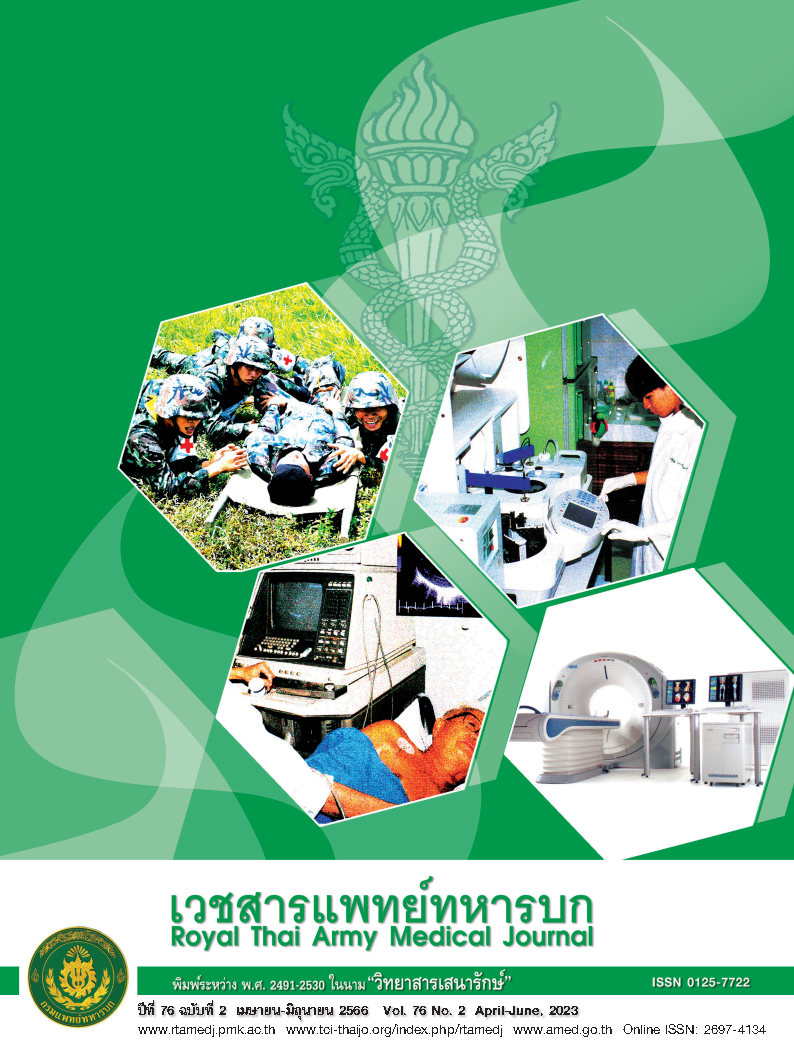A randomized, double-blind, controlled trial between bacterial cellulose gauze (BC) and petrolatum gauze (PG) in the healing of epidermal ablative wounds from carbon dioxide laser
Main Article Content
Abstract
Background: Bacterial cellulose (BC) was used to dress various wounds. BC has also applied burn wounds and ulcers as skin repair treatments. The carbon dioxide (CO2) laser has been widely used to treat numerous skin lesions. However, the benefit of BC gauze as wound dressing after CO2 laser has yet to be defined. Objectives: To evaluate the efficacy of BC gauze compared with petrolatum gauze in epidermal ablative wound healing from a CO2 laser. Materials and methods: We included 26 patients affected by at least two seborrheic keratosis lesions in the same area (face or non-face). After being treated by CO2 laser, the wounds in each patient were randomized into BC and PG groups. The dressings were changed on days 2, 4, 7, and 10 post-laser. Wound healing was assessed by BWAT score and ImageJ application during each visit. Pain scores and patient satisfaction were also recorded by visual analogue scales (VAS). Results: Twenty-six volunteers completed the study. Most lesions were on the non-face area. BWAT scores in both BC and PG groups were not different (PG vs BC day 2=24.04 vs 24.19; p=0.895, day 4=20.88 vs 21.96; p=0.305, day 7=16.5 vs 16.42; p=0.918, day 10=14.31 vs 14.92; p=0.178). From ImageJ analysis, without statistically significant differences, BC showed a tendency for a higher percentage of wound epithelialization than PG (PG vs BC day 2=20.5 vs 24.6; p=0.373, day 4=40.52 vs 45.32%; p=0.354, day 7=58.03 vs 61.35; p=0.369, day 10=67.79 vs 70.9; p=0.426). Pain scores were not different between groups, but satisfaction scores of BC were significantly higher than PG on days 7 and 10. No complications from BC had been found in this study. Conclusions: BC showed comparable efficacy with conventional dressing in epidermal ablative wound healing and can be safely used for CO2 laser wounds.
Downloads
Article Details

This work is licensed under a Creative Commons Attribution-NonCommercial-NoDerivatives 4.0 International License.
Articles in this journal are copyrighted by the Royal Thai Army Medical Department and published under the Creative Commons Attribution-NonCommercial-NoDerivatives 4.0 International (CC BY-NC-ND 4.0) license.
may be read and used for academic purposes, such as teaching, research, or citation, with proper credit given to the author and the journal.
Use or modification of the articles is prohibited without permission.
Statements expressed in the articles are solely the opinions of the authors.
Authors are fully responsible for the content and accuracy of their articles.
Any other republication of the articles requires permission from the journal.
References
Boateng JS, Matthews KH, Stevens HN, Eccleston GM. Wound healing dressings and drug delivery systems: a review. J Pharm Sci. 2008;97(8):2892-923.
Junker JP, Kamel RA, Caterson EJ, Eriksson E. Clinical Impact Upon Wound Healing and Inflammation in Moist, Wet, and Dry Environments. Adv Wound Care (New Rochelle). 2013;2(7):348-56.
Jennifer Gloeckner Powers LMM, Tania J Phillips. Dressings for chronic wounds. Dermatol Ther. 2013;26(3):197-206.
Broussard KC, Powers JG. Wound dressings: selecting the most appropriate type. Am J Clin Dermatol. 2013;14(6):449-59.
Wang J, Tavakoli J, Tang Y. Bacterial cellulose production, properties and applications with different culture methods - A review. Carbohydr Polym. 2019;219:63-76.
Shah N, Ul-Islam M, Khattak WA, Park JK. Overview of bacterial cellulose composites: a multipurpose advanced material. Carbohydr Polym. 2013;98(2):1585-98.
Portela R, Leal CR, Almeida PL, Sobral RG. Bacterial cellulose: a versatile biopolymer for wound dressing applications. Microb Biotechnol. 2019;12(4):586-610.
Krupa Shankar D, Chakravarthi M, Shilpakar R. Carbon dioxide laser guidelines. J Cutan Aesthet Surg. 2009;2(2):72-80.
Cristina Garbuio D, Mara Zamarioli C, Chantal Magalhães da Silva N, Oliveira-Kumakura ARDS, Carvalho EC. Assessment tools for the healing of wounds: an integrative review. Rev Eletr Enf. 2018;20.


